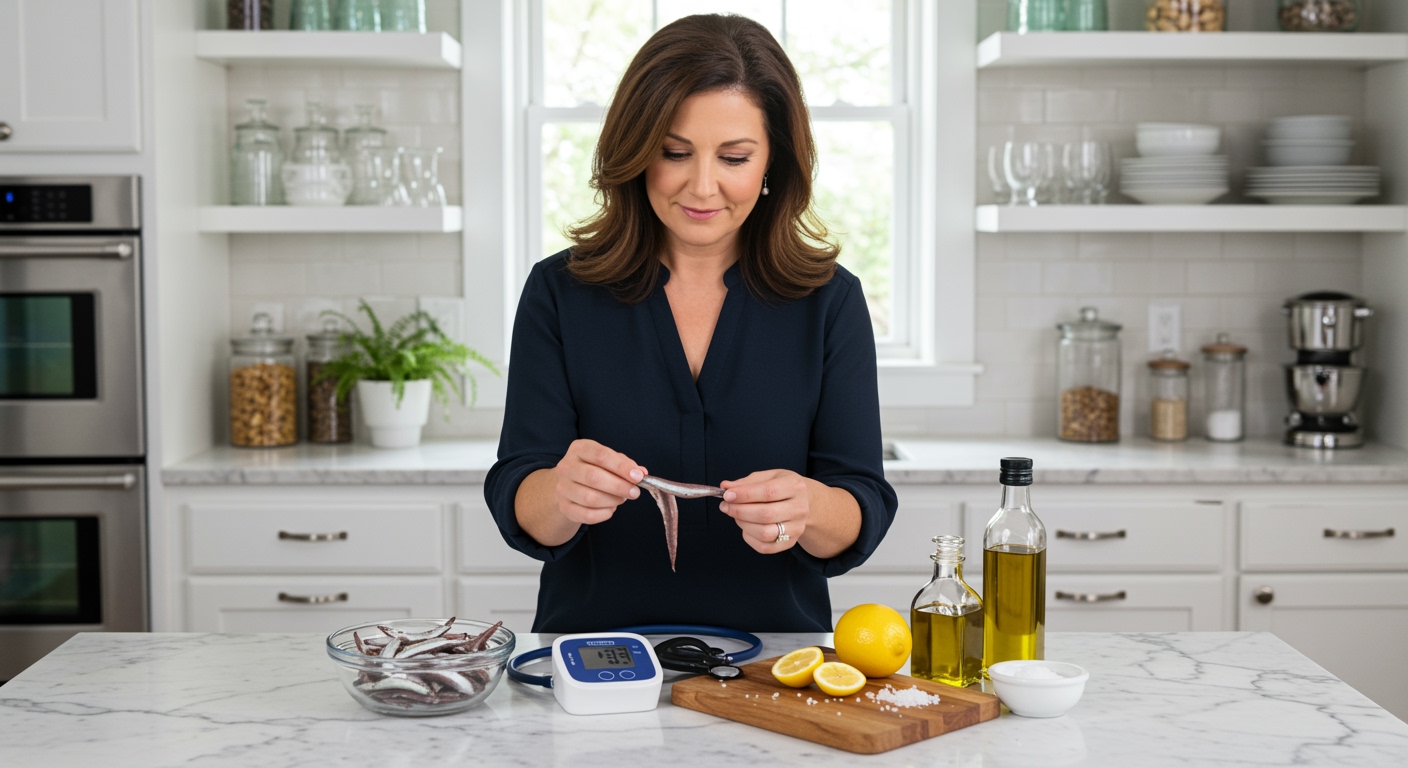✪ Key Takeaway: Fresh haddock can slightly raise blood pressure due to its natural sodium content, but the effect is minimal compared to processed fish.
Introduction
Your doctor just told you that your blood pressure runs too low, and now you are wondering if eating more fish might help.
Many people with low blood pressure search for natural ways to raise their numbers without medication, and they often turn to dietary changes for answers.
Hi, I am Abdur, your nutrition coach, and today I am going to explain exactly how haddock affects your blood pressure and whether it can actually help raise those numbers.
Does Haddock Naturally Contain Blood Pressure Raising Compounds?
Haddock contains approximately 74 milligrams of sodium per 100-gram serving, which is higher than many other white fish varieties.
This natural sodium content comes from the ocean environment where haddock lives and feeds.
Sodium directly affects your blood pressure by increasing blood volume through water retention in your bloodstream.
When your kidneys detect higher sodium levels, they hold onto more water to dilute the concentration, which increases the total volume of blood your heart must pump.
However, the sodium amount in fresh haddock is relatively modest compared to processed foods that can contain 500-1000 milligrams per serving.
The protein content in haddock also plays a role in blood pressure regulation through amino acids that support healthy blood vessel function.
✪ Fact: Ocean fish naturally contain more sodium than freshwater fish due to their saltwater environment.
How Does Cooking Method Change Haddock Blood Pressure Effects?
The way you prepare haddock dramatically changes its impact on your blood pressure levels.
Fresh haddock cooked without added salt provides the baseline sodium content of 74 milligrams per serving.
Adding just one teaspoon of salt during cooking increases the sodium content by approximately 2,300 milligrams, which can significantly raise blood pressure.
Smoked haddock contains much higher sodium levels, often exceeding 1,000 milligrams per serving due to the curing process.
Breaded and fried haddock from restaurants typically contains added salt in the breading mixture, plus sodium from any sauces or seasonings used.
Steaming, baking, or grilling fresh haddock with herbs and lemon provides the gentlest effect on blood pressure while maintaining nutritional benefits.
✪ Pro Tip: Always rinse smoked haddock under cold water before cooking to remove excess surface salt.
What Other Nutrients In Haddock Affect Blood Pressure?
Haddock provides several nutrients that work together to influence your cardiovascular system in complex ways.
The potassium content in haddock reaches approximately 351 milligrams per 100-gram serving, which helps counterbalance sodium effects.
Potassium works by helping your kidneys excrete excess sodium while relaxing blood vessel walls, which can lower blood pressure.
Omega-3 fatty acids in haddock, though lower than in fatty fish like salmon, still provide anti-inflammatory benefits for blood vessels.
These healthy fats help maintain flexible artery walls and support proper blood flow throughout your circulatory system.
The high-quality protein content of 24 grams per serving provides amino acids that your body uses to produce nitric oxide, a compound that helps blood vessels relax.
Magnesium levels in haddock contribute to muscle relaxation, including the smooth muscles in your blood vessel walls.
✪ Note: The potassium-to-sodium ratio in haddock is approximately 5:1, which generally supports healthy blood pressure.
Should People With Low Blood Pressure Eat More Haddock?
If you have low blood pressure, haddock can be part of a strategy to gently raise your numbers, but it should not be your only approach.
The modest sodium content in fresh haddock provides a small boost without the dramatic spikes that processed foods can cause.
Eating haddock 2-3 times per week gives you consistent, gentle sodium intake that may help maintain slightly higher blood pressure levels.
However, people with severe hypotension will likely need more significant dietary changes or medical intervention beyond just adding fish to their diet.
The protein in haddock helps maintain blood volume by supporting proper fluid balance in your circulatory system.
Combining haddock with other natural sodium sources like celery, beets, or a small amount of sea salt can create a more comprehensive approach.
Always consult your healthcare provider before using dietary changes to manage blood pressure, especially if you take medications or have other health conditions.
✪ Pro Tip: Track your blood pressure readings when adding haddock to see how your body responds individually.
The Bottom Line
Fresh haddock can provide a gentle, natural way to slightly raise blood pressure through its moderate sodium content and supportive nutrients.
Small dietary changes create lasting health improvements when applied consistently over time.
I would love to hear about your experience with haddock and blood pressure management, so please share your thoughts, questions, or results in the comments below.
References
At NutritionCrown, we use quality and credible sources to ensure our content is accurate and trustworthy. Below are the sources referenced in creating this article:
- Nutrition and You: Haddock Fish Nutrition Facts
- WebMD: The Health Benefits of Haddock
- British Heart Foundation: Fish Oils and Blood Pressure Powers
- PMC: Omega-3 Fatty Acids and Cardiovascular Health





